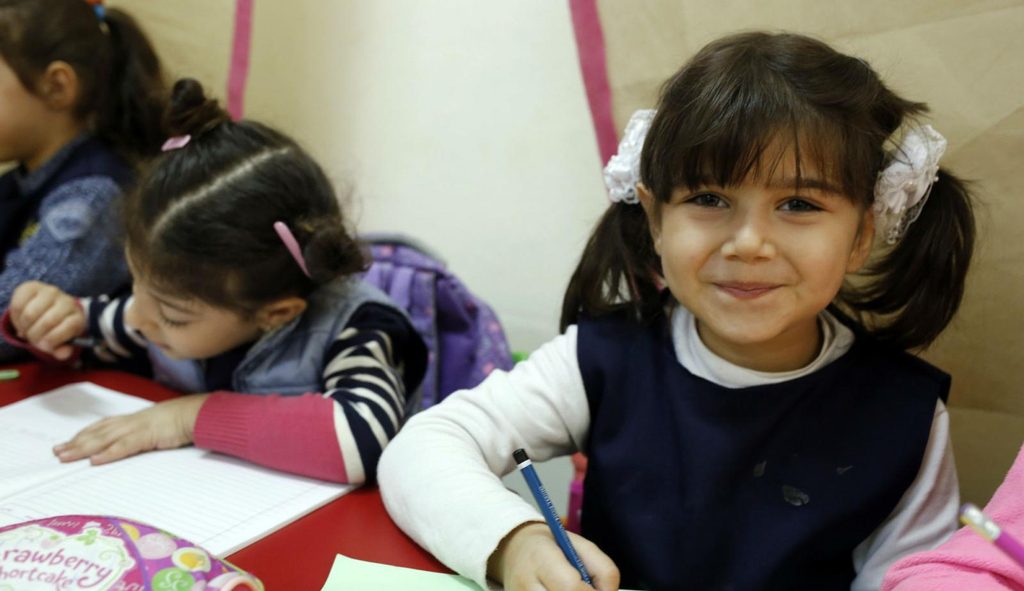Florence: A voice for change in Dzaleka Refugee Camp
"An educated refugee can stand on their own two feet and provide for themselves," says Florence, an 18-year-old refugee from DRC who now lives in Dzaleka ref…
Education is a fundamental right, yet in times of conflict and disaster it is often significantly disrupted, denying millions of girls and boys the opportunity to have a quality, safe education.
Schools are, in many instances, occupied by armed groups or used as evacuation shelters, making education impossible.

Education is an urgent priority in emergencies because it:
Recent research indicates that the number of crisis-impacted school-aged children and adolescents requiring educational support has grown from an estimated 75 million in 2016 to 222 million today. Of these, as many as 78.2 million are out of school, and close to 120 million are in school, but not achieving minimum proficiency in math or reading.
An estimated 84% of learners who are not in school are living in areas in protracted crisis.*
Plan International’s education work in emergency contexts strives to provide quality formal and non-formal education opportunities that meet the needs of children affected by humanitarian crises, from early childhood to adolescence. Our work has a particular focus on adolescent girls who are among the worst affected by disasters. Working with teachers is central, to help them manage their own stress, and teach in ways that provide the social and emotional support children need to recover from their experiences and pursue their learning. We collaborate closely with child protection colleagues to enable access to specialised services where necessary.
Ensuring the continuity of education through crisis means preparing for emergencies where they can be predicted. This includes teacher training, and ensuring buildings and school environments are safe. Education should be part of support immediately following a fast onset emergency, based on long term collaboration with education authorities, schools and communities.
Plan International uses the INEE Minimum Standards for Education: Preparedness, Response and Recovery and the Minimum Standards for Child Protection in Humanitarian Action (CPMS) as guiding frameworks.
Plan International provides support in conflict-affected fragile states, refugee situations, and in countries affected by disasters linked to climate change and natural hazards. Current responses include: complex crises that exacerbate hunger in East and West Africa and Haiti; Ukraine and refugee receiving countries; Cox’s Bazaar in Bangladesh; Tigray in Ethiopia; the migrant crisis in South America.
We must protect children and young peoples’ fundamental human right to education, write Yoris, 22, from Indonesia and Angela, 24, from Malawi.
To address the biggest violations of children’s rights, Plan International began work in Jordan in 2016. We are supporting young children to overcome emotional distress from the war in Syria and get an education.
* Plan International is not responsible for the content of other sites.